Establishing a Limited Liability Company (LLC) can be exciting. Any new business venture demands careful planning, meticulous execution, and keen attention to detail.
You may need to navigate through legal complexities, financial considerations, and administrative tasks that shape the foundation of your business.
If you’re a new entrepreneur, you may not know the exact steps involved in the LLC formation process. That’s where an LLC formation checklist comes in handy unless you intend to hire professional LLC services to complete the process for you.
In this post, you’ll find a complete LLC formation checklist along with a detailed guide to help you through the process.
Whether you’re forming a single-member LLC or a multi-member LLC, this checklist will guide you through the key steps.
Let’s get started.
What’s an LLC?
A Limited Liability Company (LLC) is a legal business structure that offers the owners (referred to as members) limited liability protection. This means that the personal assets of the members are generally shielded from the company’s debts and legal obligations.
Limited Liability Companies combine features of both Corporations and Partnerships, providing flexibility in management, ownership, and taxation. They are a popular choice for businesses due to their ability to provide limited liability to owners while maintaining a relatively simple and flexible organizational structure.
Here’s an image showing the benefits of a Limited Liability Company (LLC).
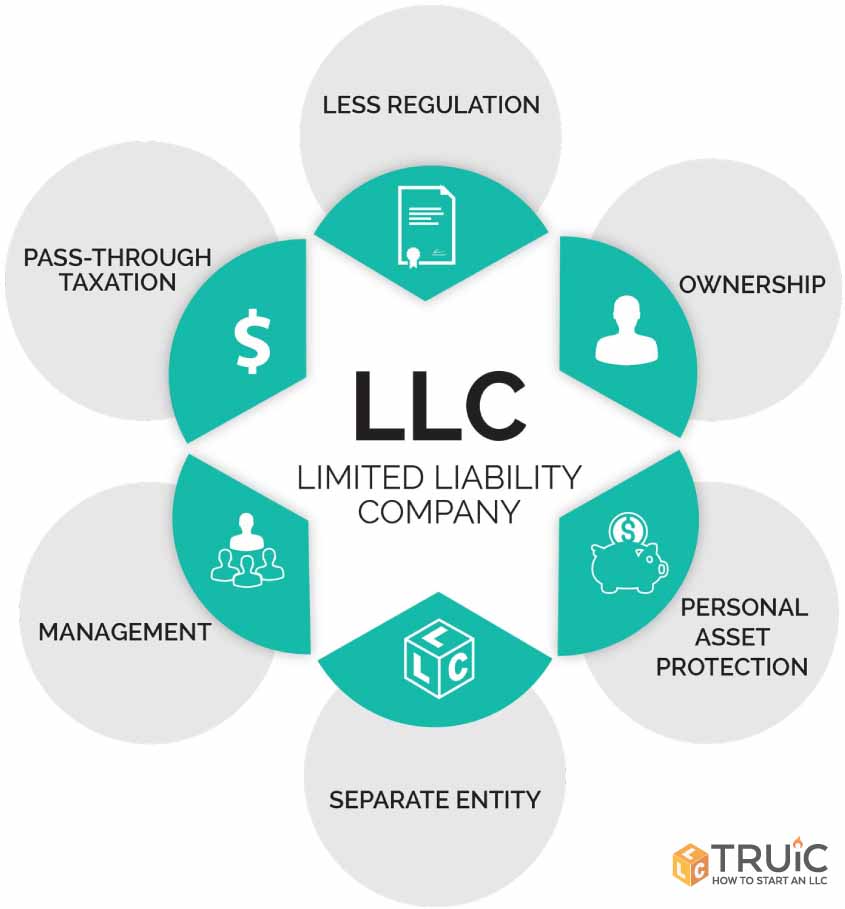
Image via TRUiC
You May Also Like:
LLC Formation Checklist You Should Follow
Forming a Limited Liability Company (LLC) involves a whole set of legal and administrative steps, which can be tedious and overwhelming.
To make things simpler for yourself, you can hire business formation services like Inc Authority. Check out this Inc Authority review to ascertain if it meets your needs.
The exact steps and requirements for LLC formation can vary depending on the state where the Limited Liability Company is being created. Therefore, we’ll tackle some common steps involved in forming a limited liability company in this LLC formation checklist.
Here you go.
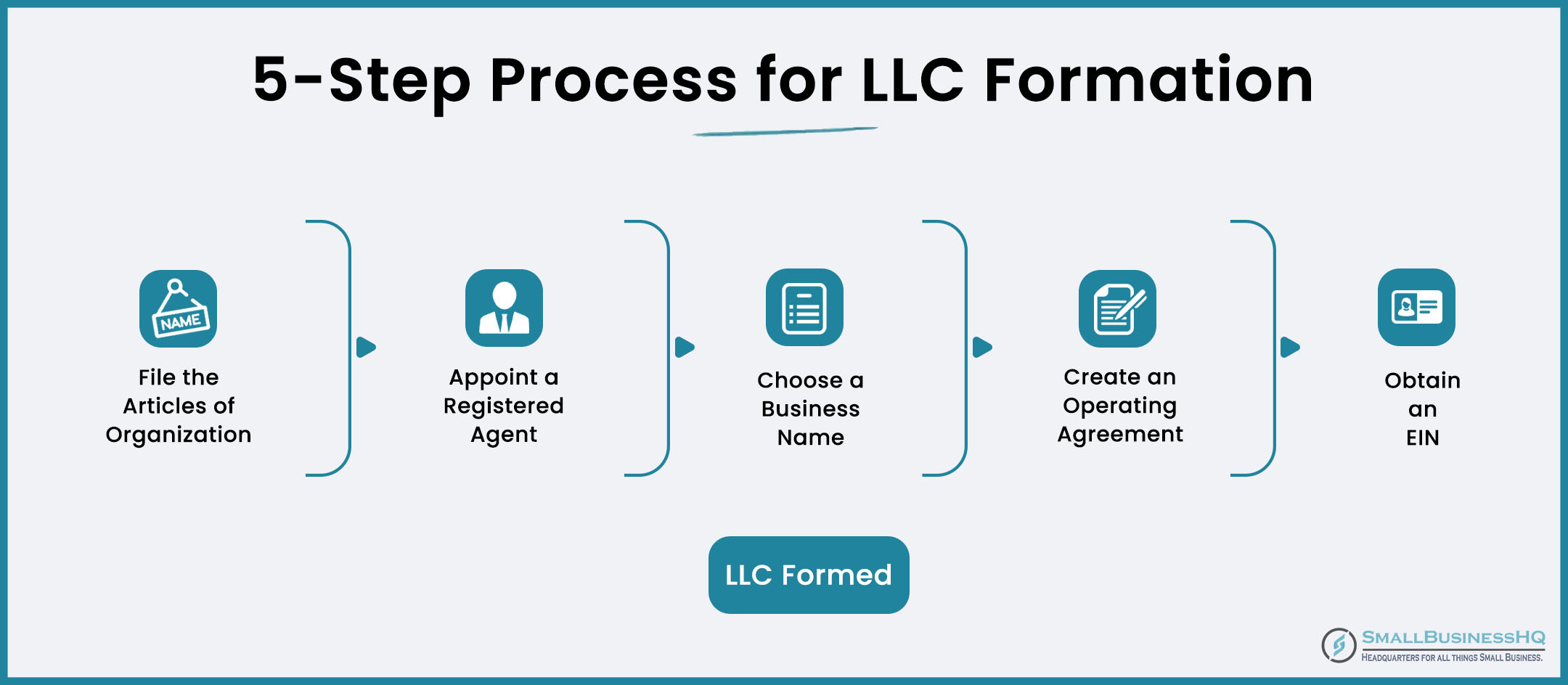
1. Choose a Business Name
The first step in this LLC formation checklist is choosing a relevant business name that represents your business. Apart from that, your LLC needs a unique name that’s not already taken by another business entity in your state.
Here’s a step-by-step guide to choosing a business name.
a. Choose a Relevant and Creative Name
Your business name should reflect the essence of your products, services, or the industry in which you operate. Consider the following tips to shortlist a few names:
- Brainstorm Keywords: List down relevant keywords related to your business. Think about what you do, your unique selling points, and the emotions you want your business to evoke.
- Embrace Creativity: Combine keywords, play with synonyms, or use metaphors to create a memorable and distinctive name.
- Keep it Simple: A concise and easy-to-pronounce name will be more memorable and approachable for your customers.
Keep a few names on the shortlist at this stage and then move on to the next step in this LLC formation checklist.
b. Check for Name Availability
Once you’ve shortlisted a few names, check whether they’re available for use within your state.
This step is crucial to prevent potential legal issues and to ensure that your chosen name is truly unique and that no other business is using the same name.
You can search the state database (business registry) to check for name availability or use one of the LLC formation service providers that offer this service.
c. Follow Your State’s Naming Convention
When selecting a business name, it’s essential to adhere to your state’s specific naming conventions and regulations. Each state has its own set of rules dictating what’s permissible and what’s not.
These regulations often outline prohibited words, such as terms that might mislead consumers or imply an affiliation that doesn’t exist. You will find these guidelines on your state’s official website.
Here’s an example of the restricted words for naming LLCs formed in New York.
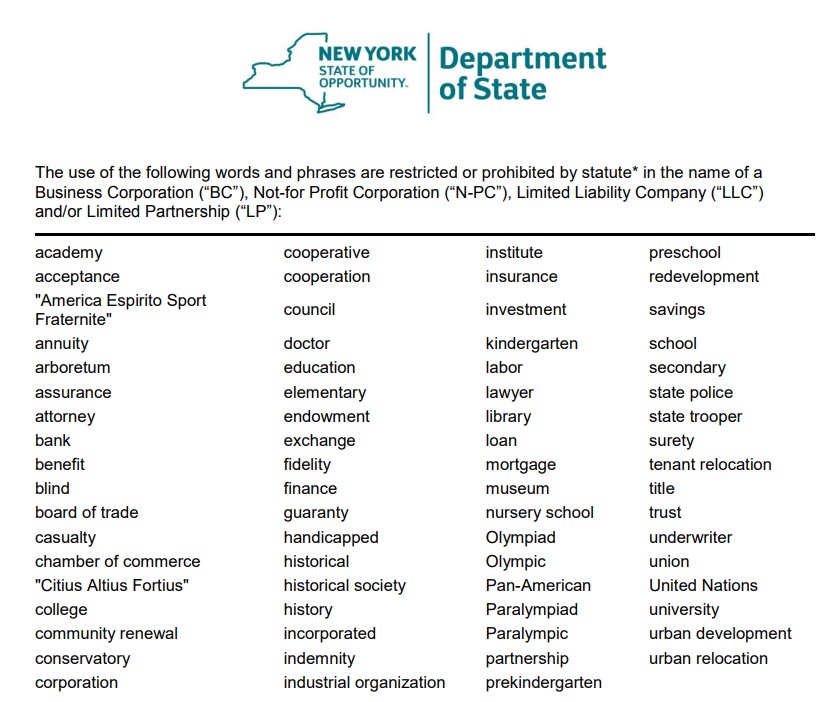
Image via NY Department of State Website
d. Find a Matching Domain Name
Securing a matching domain name is a crucial aspect of establishing your business’s online presence. Therefore, it’s important to determine if the corresponding domain name is available for your chosen business name.
Ideally, aim for a domain name that mirrors your business name as closely as possible. Doing so simplifies your online branding and contributes to better search engine visibility and customer recognition.
In case your exact business name’s domain is already taken, consider alternative options such as slight variations, abbreviations, or adding relevant keywords.
e. File for a DBA (Doing Business As)
If you want to run your business under a name different from your legal business name, you’ll need to file for a DBA. To comprehend the differences between a DBA and an LLC, read more about DBA vs LLC.
Here’s how:
- Understand the requirements: Check your state and local regulations to determine if a DBA registration is necessary.
- Register the DBA: Follow the steps outlined by your state or local government to register your DBA name. This typically involves submitting a registration form and paying a fee.
If you find it hard to choose the best name, you can seek advice from reputable business formation services. Check out this article to choose the best business formation service.
You May Also Like:
2. Appoint a Registered Agent
Many states require a Limited Liability Company (LLC) to have a registered agent as part of the formation process. To discover the right service for your needs, explore the best LLC services.
A registered agent is a designated individual or entity responsible for receiving legal documents, official notices, and other important correspondence on behalf of your business entity. This ensures that there’s a reliable point of contact for legal matters related to the company.
A registered agent serves as a communication link between the Limited Liability Company (LLC) owners and local government agencies. In some states, a registered agent may also be referred to as a resident agent or a statutory agent.
Any business owner or eligible individual can act as an agent, provided they meet specific requirements. They:
- Must be 18 years of age or older.
- Must have a physical address within the state where the business is formed.
- Must be available during normal business hours to receive legal documents and important notices.
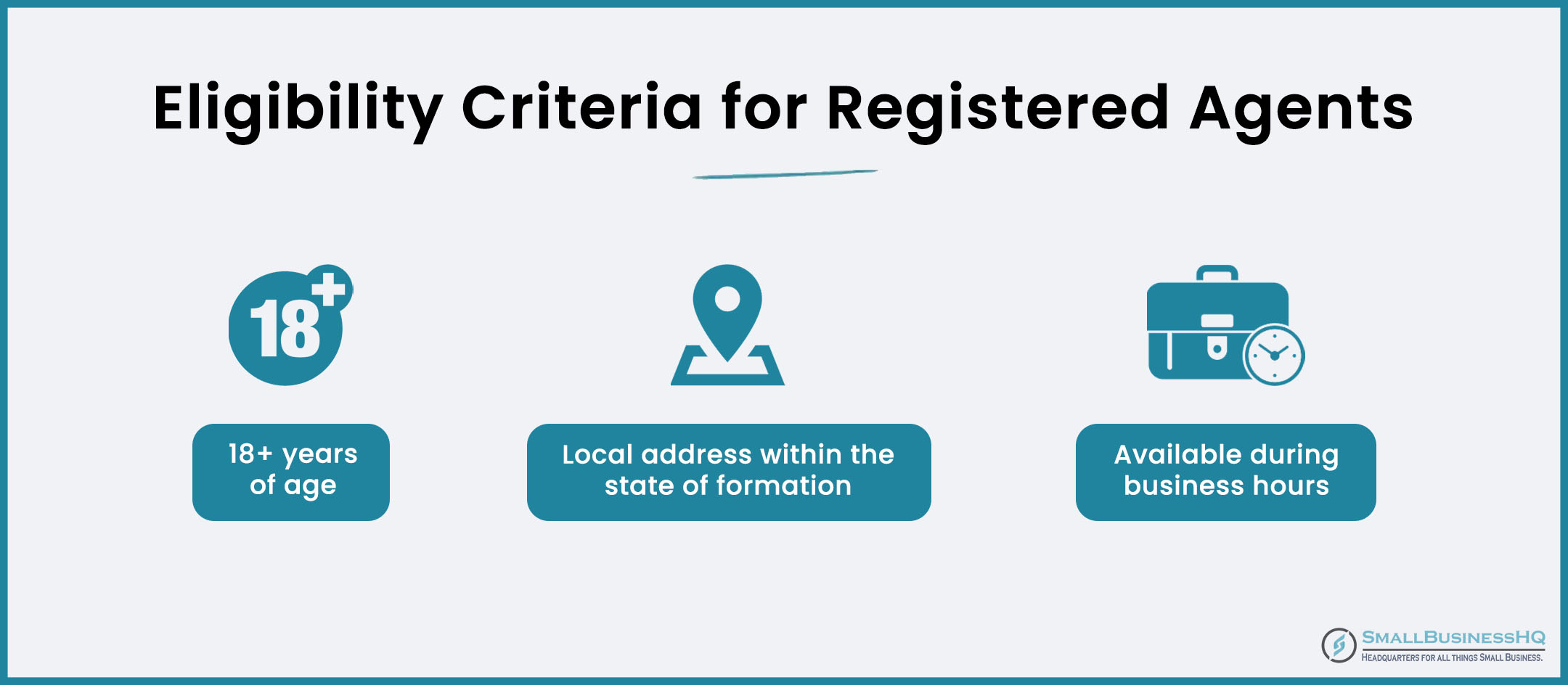
While a business owner or an individual associated with the Limited Liability Company (LLC) can serve as a resident agent, many companies opt to hire a professional registered agent service.
Choosing whether to be your own registered agent or to hire a professional service depends on your individual circumstances and priorities.
While fulfilling the role yourself is an option, contracting registered agent services can offer numerous benefits. These include:
- Increased convenience
- Enhanced privacy
- Heightened level of compliance assurance.
Business formation companies like Inc Authority and Incfile also provide registered agent services, so you can check these out.
You May Also Like:
3. File the Articles of Organization
The next, and most important, step on this LLC formation checklist is filing the Articles of Organization. This is the official step to legally register your LLC with the Secretary of State’s office.
It’s sometimes referred to as the Certificate of Formation or Certificate of Organization in certain states.
The formation document formally establishes your Limited Liability Company (LLC) as a legal business entity recognized by the state.
So, what are the steps involved in the process?
Here’s a checklist of things you should do.
a. Understand the Components of the Articles of Organization
The Articles of Organization outline essential details about your Limited Liability Company (LLC), providing a snapshot of its basic structure and purpose. For a reliable service to help you with this process, consider reading the review of ZenBusiness.
While the specifics can vary by state, this document typically includes:
- The business name and address
- The purpose of the Limited Liability Company (LLC)
- The registered agent’s name and address
- The management structure (member-managed or manager-managed)
- The names and addresses of the LLC’s members or managers
- The estimated lifetime of the business (if not perpetual)
b. Submit the Articles of Organization
Prepare and file the article of organization, along with the required filing fee, with the appropriate state agency—often the Secretary of State’s office.
While the process is generally straightforward, the specific requirements and procedures can differ from state to state.
Here’s a complete checklist of everything you need to do to file your formation documents.
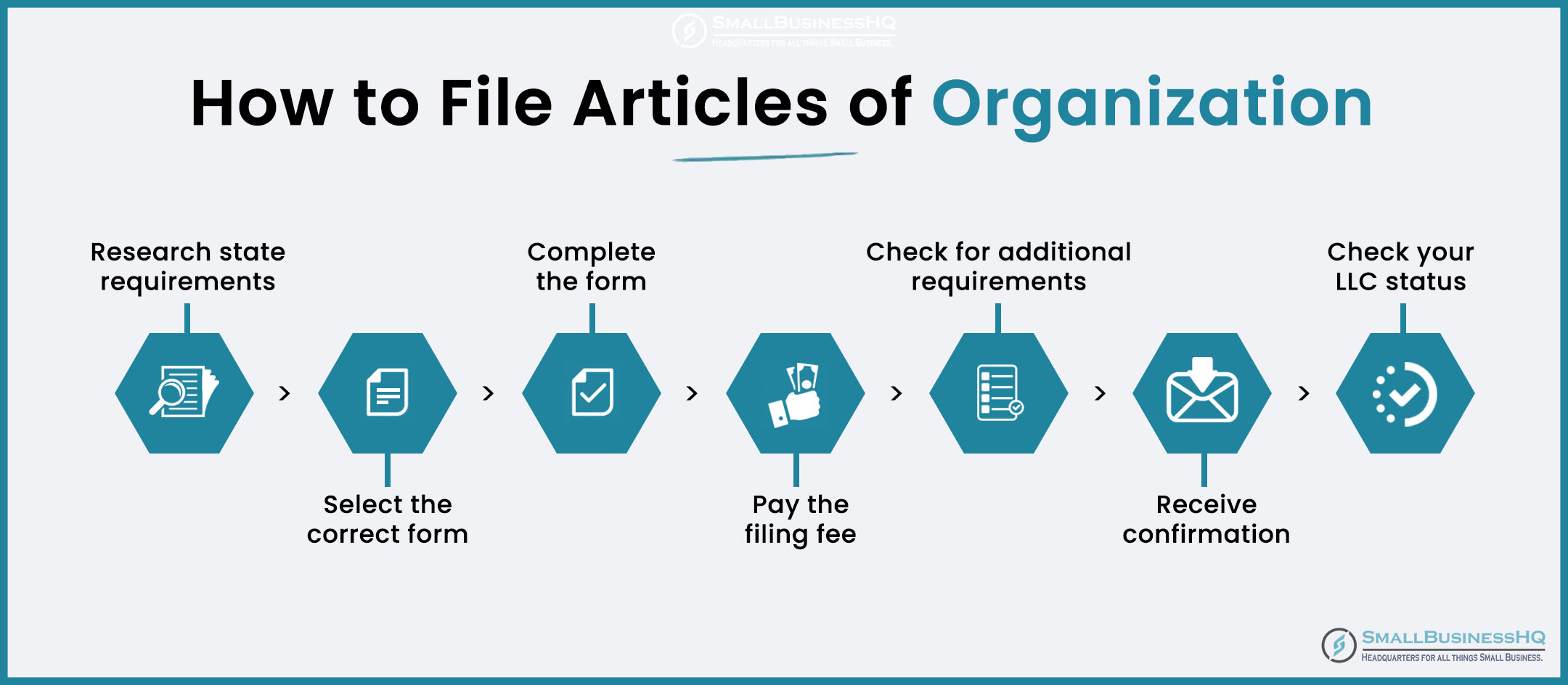
- Research state requirements: Visit the official website of the Secretary of State or the appropriate agency in your state. Look for a section related to business formation or starting a new business. Each state’s website will provide information on the specific documents you need and the steps to take.
- Select the correct form: Determine the type of formation document you need to file. In most cases, this will be the Articles of Organization or a similar document. Some states might have a specific name for this form, such as the Certificate of Formation.
- Complete the form: You can either download the form or fill it out online. The form will typically ask for details such as the LLC’s name, address, purpose, registered agent information, management structure, and member details.
- Pay the filing fee: Many states require a state fee when submitting formation documents. Check the amount and accepted payment methods on the state’s website. Make the payment when submitting the completed form.
- Check for additional requirements: Some states might have additional requirements, such as providing a statement of information or appointing an organizer. Make sure you’re aware of these requirements and fulfill them.
- Receive confirmation: After submitting the formation documents, you’ll receive a confirmation from the state. This might be a physical confirmation letter, an email, or an online notification.
- Check your LLC status: Once your LLC is approved, check the state’s official business entity database to confirm that your Limited Liability Company (LLC) is listed as active and in good standing.
Filling out the formation documents might seem straightforward, but it’s important to carefully follow the instructions provided by your state and double-check all the information when you fill out the form. For assistance, consider utilizing one of the best LLC services.
If you’re unsure about any aspect of the process, consider seeking professional assistance or legal advice from companies like Incfile to ensure everything is done correctly. Go through this Incfile review to see if it fits your needs.
You May Also Like:
4. Create an Operating Agreement
The next step on this LLC formation checklist is creating an LLC operating agreement.
An operating agreement is a document that outlines the roles and responsibilities of the LLC members, the ownership structure, the decision-making process, and other important operational details.
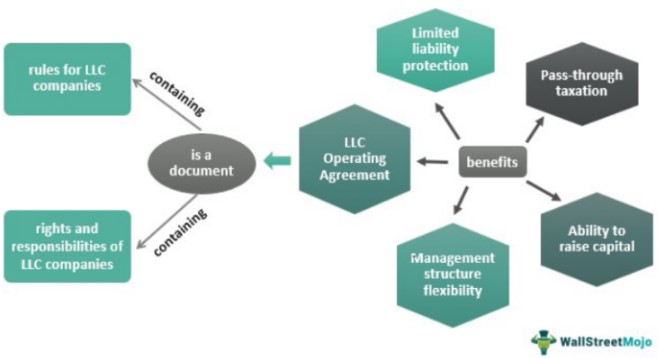
Image via WallStreetMojo
Not all states require LLC operating agreements. However, it’s highly recommended to have one, as it offers clarity on how an LLC will be run and protects your limited liability status. For a reliable service to assist you in creating an operating agreement, consider reading this ZenBusiness review.
Here’s a checklist of all the things you should include in your LLC operating agreement:
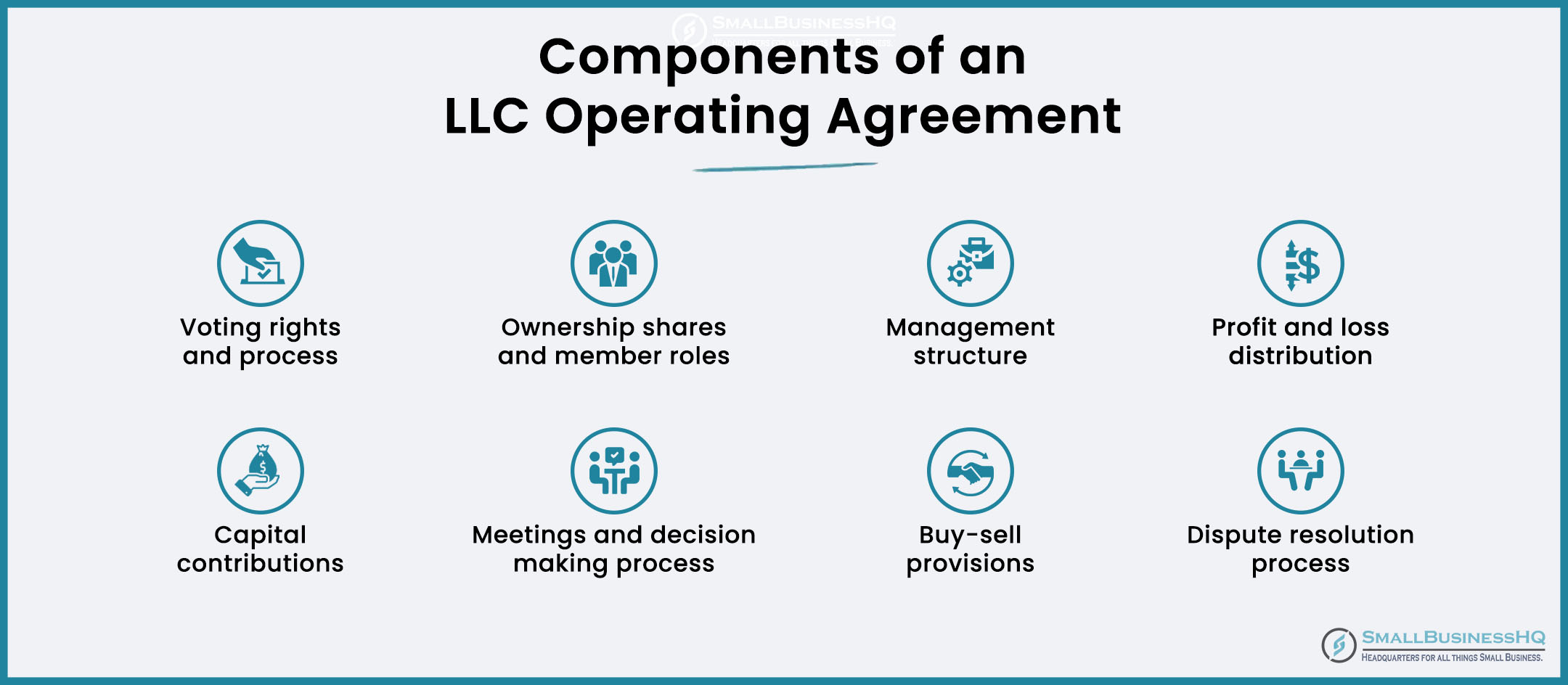
- Ownership shares and member roles: Specify the ownership percentages of each member and describe their roles and responsibilities within the company.
- Management structure: Detail whether your LLC will be member-managed (where all members participate in decision-making) or manager-managed (where specific individuals are appointed to manage the company).
- Voting rights and process: Outline how voting on significant decisions will occur, including the process for reaching a consensus.
- Profit and loss distribution: Define how profits and losses will be distributed among the members based on their ownership percentages.
- Capital contributions: Specify the initial investment made by each member and how additional capital contributions will be handled.
- Meetings and decision-making process: Describe how meetings will be conducted, how decisions will be made, and the protocol for amending the LLC Operating Agreement.
- Buy-sell provisions: Include provisions for the transfer of ownership interests if a member leaves or sells their stake.
- Dispute resolution: Establish a process for resolving disputes among members to avoid potential conflicts.
If you need help crafting a comprehensive LLC Operating Agreement, companies like Incfile and LegalZoom can help. Such companies typically offer this service as part of their paid plans, so compare the various options before you make a decision.
5. Obtain an Employer Identification Number (EIN)
An Employer Identification Number (EIN) is a unique nine-digit number assigned by the Internal Revenue Service (IRS) to identify your business for tax purposes. Think of it as a social security number for your business entity.
The EIN is also known as a Federal Tax Identification Number (Tax ID). An EIN enables you to conduct various financial transactions and fulfill your tax obligations as a legal entity.
So, why do you need a Federal Employer Identification Number?
Your LLC requires an EIN if:
- It has, or plans to hire, employees, even if it’s just one. You’ll need an EIN to manage payroll, withhold taxes, and report employment-related taxes to the IRS.
- It’s owned by multiple members. You’ll need an EIN to separate your business’s tax identity from the personal tax identities of the members.
- It’s engaged in certain activities that are subject to excise taxes, such as selling specific goods or services.
Obtaining an EIN is a relatively straightforward process. You can do it in three ways:
- Online application: The easiest way to apply for an EIN is through the IRS’s online application system. The process is free and efficient.
- Paper application: If you prefer, you can complete Form SS-4 (Application for Employer Identification Number) and submit it to the Internal Revenue Service (IRS) by mail, fax, or in person.
- Phone application: You can also obtain an EIN by calling the IRS and providing the necessary information over the phone.
While it’s easy to apply for an EIN, you can choose to hire professional services for convenience. Check out this review to help you choose the best LLC services to help you get an EIN.
Even if you don’t have any employees, getting an EIN can still be beneficial. It can, for example, help you separate your business activities from your personal activities and provide an additional layer of identity protection.
Additionally, if you plan to open a business bank account, some banks may require an EIN to open an account.
That brings us to the end of this LLC formation checklist, but there are still some things you need to do.
Read the next section to find a checklist for things to do after LLC formation.
You May Also Like:
Important Things to Do After Forming an LLC
After forming a Limited Liability Company (LLC), there are several important steps you should take to ensure your new business is set up for success and compliance.
Here are some things to include in your post-LLC-formation checklist.
Obtain Necessary Licenses and Permits
Depending on your industry and location, your Limited Liability Company (LLC) may need specific licenses and permits to operate legally. Do some research to identify the required licenses and ensure you obtain them before conducting business. For help choosing the right service to aid you, compare Incfile vs. ZenBusiness.
Open a Business Bank Account
It’s important to keep your business finances separate from your personal assets and finances. Open a dedicated business bank account to keep accurate records of income and expenses related to your Limited Liability Company (LLC). This will help you overcome the challenges of financial accounting and manage your finances better.
Comply with Tax Obligations
Understand your federal, state, and local tax requirements. This includes sales tax, income tax, employment tax, and any other applicable taxes. If your LLC has employees, you’ll need to handle payroll taxes and provide the necessary tax documents to your employees.
Insure Your Business
Evaluate the types of insurance your Limited Liability Company (LLC) might need to protect against various risks. This could include general liability insurance, professional liability insurance, property insurance, and more.
Register for State Taxes
If your state has state-level taxes, such as state income tax or sales tax, ensure you register and comply with these requirements.
Seek Professional Advice
Don’t hesitate to seek legal, financial, and tax advice from professionals who specialize in small business operations. Their expertise can help you make informed decisions and avoid pitfalls.
If you need any financial or legal help, you can seek help from companies like LegalZoom. You can also explore LegalZoom alternatives that better meet your requirements.
You May Also Like:
FAQs
Q1. What is the first step in the formation of an LLC?
A. The first step in forming an LLC is choosing a unique business name that complies with your state’s naming requirements. Your LLC’s name should be distinguishable from other registered businesses in your state.
It’s important to check name availability through your state’s business entity database before proceeding with other formation steps to avoid potential issues down the road.
Q2. What documents are required to form an LLC?
A. For starting a Limited Liability Company (LLC), you typically need to prepare and file the Articles of Organization (or a similar document) and submit it to the respective Secretary of State’s office.
This document includes basic information about your Limited Liability Company (LLC), such as its name, address, registered agent, and management structure.
Q3. Do I need a separate bank account for my LLC?
A. Yes, it’s highly recommended to open a separate business bank account for your LLC. Keeping your business finances separate from personal finances helps maintain accurate financial records, simplifies tax reporting, and preserves the limited liability protection of your LLC.
Q4. What are the essential elements of an LLC?
A. Some of the essential elements of an LLC include:
- Articles of Organization: This is the primary formation document filed with the state to officially create your LLC, be it an online business or a physical office space.
- Operating Agreement: While not legally required in all states, an operating agreement is crucial for outlining your LLC’s ownership structure, management, and operating procedures.
- Registered Agent: Most states require LLCs to appoint a registered agent to receive legal documents and official notices on behalf of the company.
- EIN: An Employer Identification Number is necessary for opening business bank accounts, hiring employees, and filing taxes.
- Business Licenses and Permits: Depending on your industry and location, you may need to obtain specific licenses and permits to operate legally.
Q5. Why do I need an LLC formation checklist?
A. The key purpose of an LLC formation checklist is to help new entrepreneurs understand the steps they need to take to form one. An LLC formation checklist also ensures that they don’t miss anything important and can start an LLC without any hassle.
Q6. What is the difference between an LLC and an S-Corp?
A. Both LLCs and S-Corporations (S-Corps) offer limited liability protection, but they differ in terms of taxation and ownership structure.
LLCs have more flexibility in terms of management and taxation, while S Corps have stricter ownership requirements and certain tax advantages. Consulting with a tax professional or hiring business formation services can help you choose the right structure and start your new business.
Q7. How do owners of an LLC get paid?
A. Owners of an LLC, known as members, can be paid in various ways. They can receive distributions of profits, either on a regular basis or when the company generates profits.
Additionally, members can receive salaries or wages if they are actively involved in the business.
Q8. How much does an LLC cost in Colorado?
A. Colorado is one of the most affordable states to form an LLC. The cost to form an LLC in Colorado depends on several factors, including filing fees, registered agent fees, and any additional services you may need.
That said, as of 2025, the basic filing fee for Articles of Organization in Colorado is $50. However, you may incur additional costs for expedited processing, obtaining an EIN, or hiring a professional registered agent service.
It’s essential to research and budget for all necessary expenses to ensure a smooth LLC formation process.
Final Thoughts
Hopefully, this LLC formation checklist has helped you understand the steps you need to follow to establish your LLC. You’re now better equipped to start this exciting entrepreneurial journey.
By diligently completing each step in the LLC formation checklist, you pave the way for a strong and legally sound foundation for your business.
It’s important to consider seeking professional advice, especially for complex matters or unique circumstances.
You can contact business formation services like Zenbusiness to help you with the process. If you need to compare a variety of services, you can check out these Zenbusiness alternatives.
So, what are you waiting for? Use this LLC formation checklist and utilize the best LLC services to take your company to new heights.





















